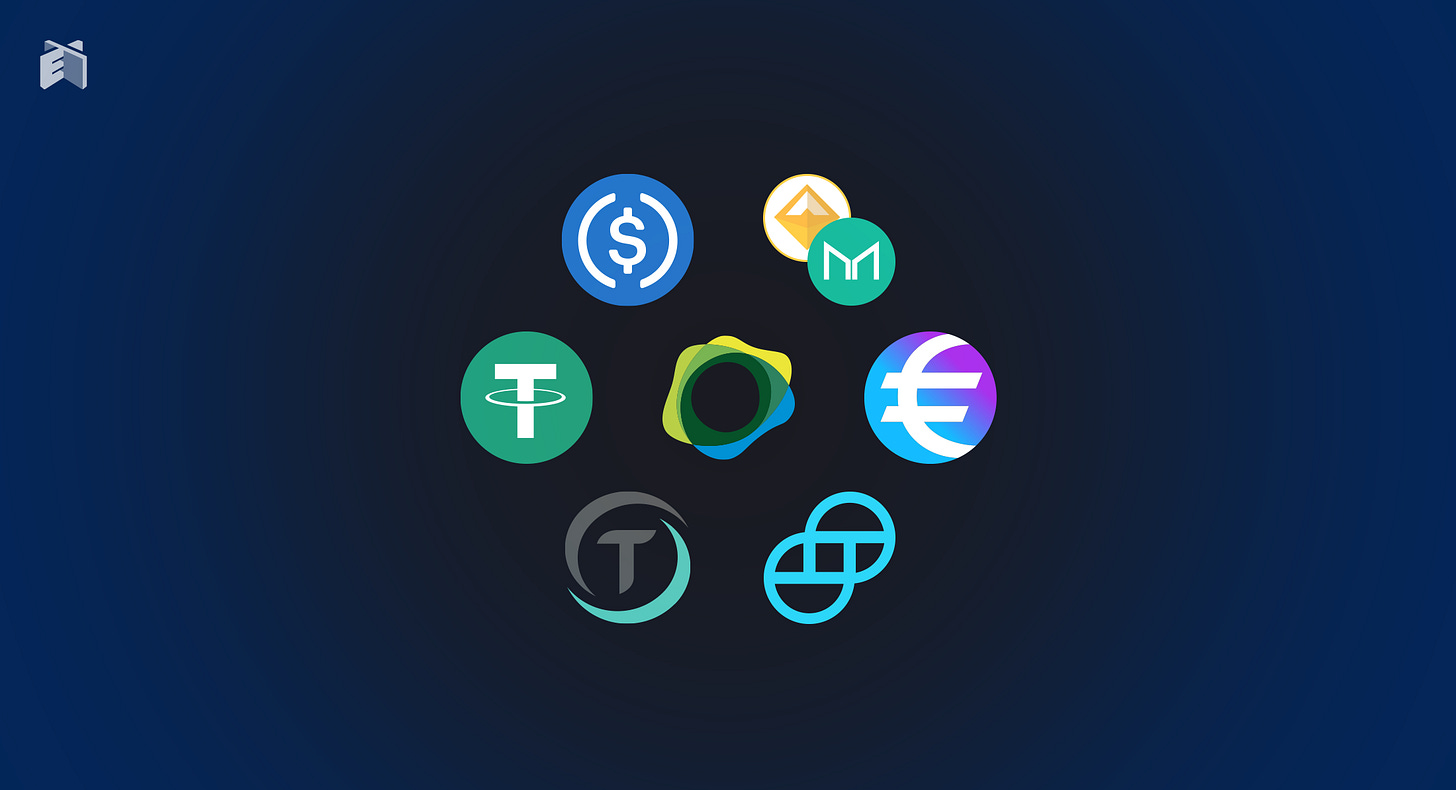What are Stablecoins and how do they promote Dapp usage? 💵
Let’s talk about stablecoins. These are tokens that are pegged to an asset in a 1:1 ratio.
Imagine stablecoins as a gift card. A $100 amazon gift card is a stablecoin worth $100 redeemable only at Amazon (issuing entity). Here, Amazon is the house and makes the rules of the game. However, crypto stablecoins are issued on a blockchain such as Omni, Ethereum, Cosmos, Matic etc. This means any stablecoin once issued on the blockchain can be transferred to anyone in a permissionless* manner. They are not a new thing in crypto and have existed for a long time.

The recent yield farming craze in DeFi and projects like yearn and curve.fi have brought them into the limelight for two reasons:
You can earn extraordinary returns (1-10% daily on USD stablecoins)
You do not have to worry about the volatility associated with cryptocurrencies, and still get high returns on your capital.
So what makes them special?
Fiat on-ramp: USD-backed stablecoins are a really helpful fiat on-ramp and off-ramp for crypto-currency because not many countries have banking support.
Medium of Exchange: They allow you to transfer money easily without worrying about the price.
Non-volatile: They are supposedly pegged to the underlying asset in a 1:1 ratio, however, the peg can still vary based on supply and demand.
They can be categorized into two broad types:
Decentralized - Not prone to censorship, and it is by a non-custodial entity
Centralized - The issuing entity acts as a custodian and is prone to censorship
The most popular stablecoin pair is the USD-stablecoin. We still take that as a reference because USD is still the quote currency in crypto. There are, however, few BTC-stablecoin viz. tBTC, WBTC, renBTC, and sBTC which have seen an increase in usage due to DeFi.
The first chart shows the increased daily active addresses for tether (USDT) - the biggest of the USD-stablecoins in terms of issuance and acceptance. The growth has been exponential month-over-month, from 12k in Feb ‘20 to 175k in June’20, with active address now steady at 125k. Stablecoin yield projects such as Curve.fi were launched in early 2020.

The below chart compares the daily usage of other stablecoins v/s USDT. It compares USDC (green), DAI (blue), and USDT (yellow). Tether dominates in terms of usage, with USDC catching up slowly, and DAI growing at a steady pace. Most of the DeFi platform prefers DAI, however, due to low liquidity, the market has gravitated towards centralized stablecoins such as USDC, and eventually USDT.

Why does it matter?
No one wants to use a volatile asset every day. This is one of the biggest criticisms of bitcoin or Ethereum. Ethereum has been used as an asset for MakerDAO since 2018 but there are problems in managing risks using a volatile asset as collateral.
Stablecoins are best suited for this purpose because they are pegged to $1.
That is not to say they don’t fluctuate, they do. However, the volatility isn’t a big concern. The reason they fluctuate has to do with the demand in the market. E.g. DAI has not been able to maintain its peg to $1 (see image), because the demand for DAI in yield farming is really high.

Source: https://dai.stablecoin.science/
However, the increased usage of Stablecoins helps increase adoption of decentralized apps on Ethereum and other blockchains.
One of the biggest validation for the adoption power of stablecoins is Terra, which is now used by major e-commerce companies in Asian markets. Also, as a second-order effect now a decentralized application can onboard a user directly using stablecoin without exposing it to the volatility of the crypto asset, creating a positive-sum effect to the whole ecosystem.
The Big Picture
Stablecoins resemble the inflection point in the growth of Dapps and are uniquely positioned to act as a medium of exchange, by enhancing both the efficiency and usage of Dapps & other protocols.



